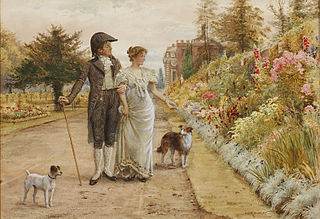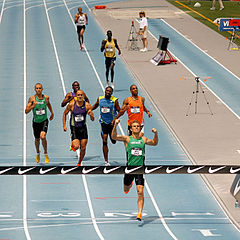
In Jane Austin’s Pride & Prejudice, Elizabeth Bennet decides to visit her sister who fell ill while calling on the Bingleys. When Elizabeth’s father reluctantly offers her the use of a horse, Elizabeth declines.“I do not wish to avoid the walk,” she says. “The distance is nothing when one has a motive: only three miles. I shall be back by dinner.”
Let’s take a moment to unpack Elizabeth’s declaration. The distance from her house to the Bingleys is “only” three miles. That’s a six mile roundtrip, and no one says the distance is too far to walk. One sister mentions that she prefers not to exert herself so much, while two others join Elizabeth for part of the journey, before turning their own steps towards town.

Long walks in all kinds of weather, expected or sudden, are a frequent activity in Austin novels. Walks to neighbors; walks to town; walks across meadows or down to lakes for a picnic. Walking was the only way to get out of the house, whether for social interactions or solitary contemplation. Walking in public spaces was also one way couples became acquainted away from matchmakers.
But walking in Regency England was only appropriate if one didn’t need to do it. One walked the moors or strolled on the promenade in Bath through choice rather than necessity.
The “Running Craze”

In 1960, Americans didn’t think a normal person would walk, jog, or run unless the individual was trying out for the college track team. But change was in the wind. Bill Bowerman, a running coach at the University of Oregon went to New Zealand and met with a jogging coach. Bowerman was so impressed he co-wrote a book, Jogging, to prove jogging led to better health.
Slowly the new exercise caught on, but solitary individuals jogging around a neighborhood were viewed with suspicion. In 1968, police issued a ticket to a runner in Hartford, Conn. for the “illegal use of a highway by a pedestrian.” Soon no one noticed fitness disciples running and jogging their way through life.

In 1977, Jim Fixx published The Complete Book of Running, and not long after, running was “in.” Fixx generously indicated joggers could call themselves runners. But he didn’t discuss walking. The activity was running, not walking, leaving the impression that walkers lacked … something. Walkers often outpaced joggers, but how could something people did every day be a form of exercise?
Walkers kept walking anyway
As runners wore out their joints, walkers kept walking. They walked for miles on all terrains, and researchers finally started to pay them some attention.
There is a significant difference between walking and running. In running, both feet are off the ground at the same time. The runner pushes up and then lands. Thud. In walking, only one foot at a time leaves contact with the ground.
How we walk

We don’t normally think about the mechanics of walking, but in case you ever wondered … in the forward motion, the leg leaving the ground swings forward from the hip, before striking the ground with the heel and rolling forward through the toe.

It turns out walking is a stellar form of exercise. Other than a good pair of shoes, walkers don’t need any special equipment for their daily activity.
Walking at a brisk pace is a low impact exercise that is weight bearing for better bone health, contributes to weight loss, lowers blood pressure and stress levels, and improves cardiovascular health. It’s also a good chance to get outside and take a break.
While playing Elinor in the movie Sense & Sensibility, Emma Thompson observed that standing like an Austin heroine was a strenuous activity that required keeping the pelvis firmly beneath the rib cage. The same could be said for walking like an Austin heroine.*
There is, of course, a healthful way of walking that we might not be aware of, one that doesn’t include looking at our phones. We all have our walking idiosyncrasies, but Margaret Martin’s approach may give you some new ideas.
🏆🏆🏆
*Quoted in “Incandescently Healthy.” Willow & Thatch.
Illustrations
Morning Walking Dress, 1810
A Garden Stroll by George Goodwin Kilburne
2010 USA Track & Field Championships by Phil Roeder
Man Walking Icon
Stance & swing phase of a gait cycle. By Rlawson9
People Walking in Caleta de las Monjas by Ian D Keating
Phil Edwards. “When Running for Exercise was for Weirdos.” Vox. Aug. 9, 2015.
Oliver Jones. “Walking & Gaits.” Teach Me Anatomy. Nov. 13, 2020.
James Roland. “How to Walk Properly with Good Posture.” Healthline. Jan. 16, 2020.

Sandra Wagner-Wright holds the doctoral degree in history and taught women’s and global history at the University of Hawai`i. Sandra travels for her research, most recently to Salem, Massachusetts, the setting of her new Salem Stories series. She also enjoys traveling for new experiences. Recent trips include Antarctica and a river cruise on the Rhine from Amsterdam to Basel.
Sandra particularly likes writing about strong women who make a difference. She lives in Hilo, Hawai`i with her family and writes a blog relating to history, travel, and the idiosyncrasies of life.

